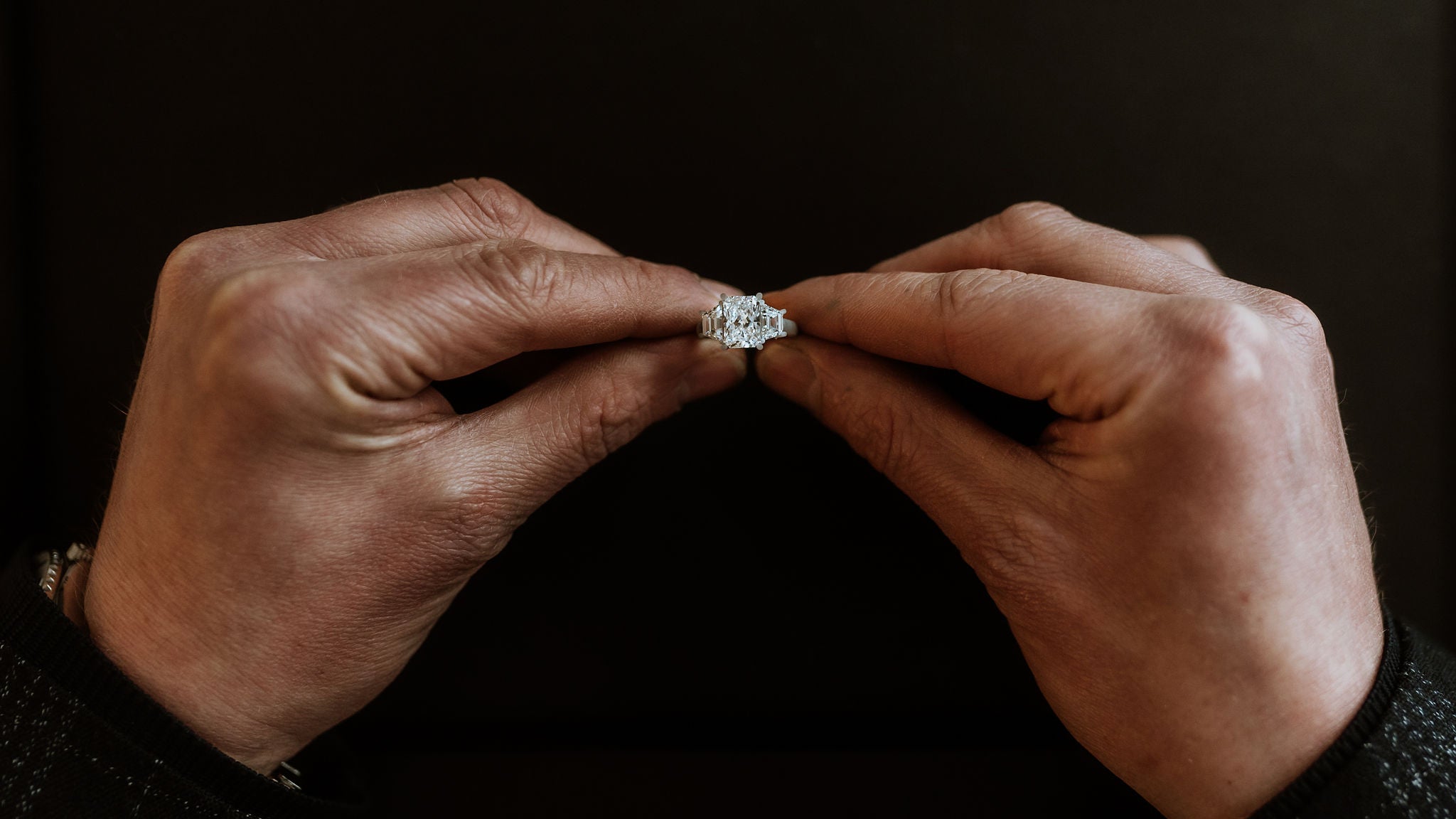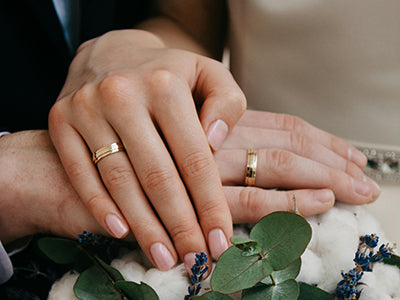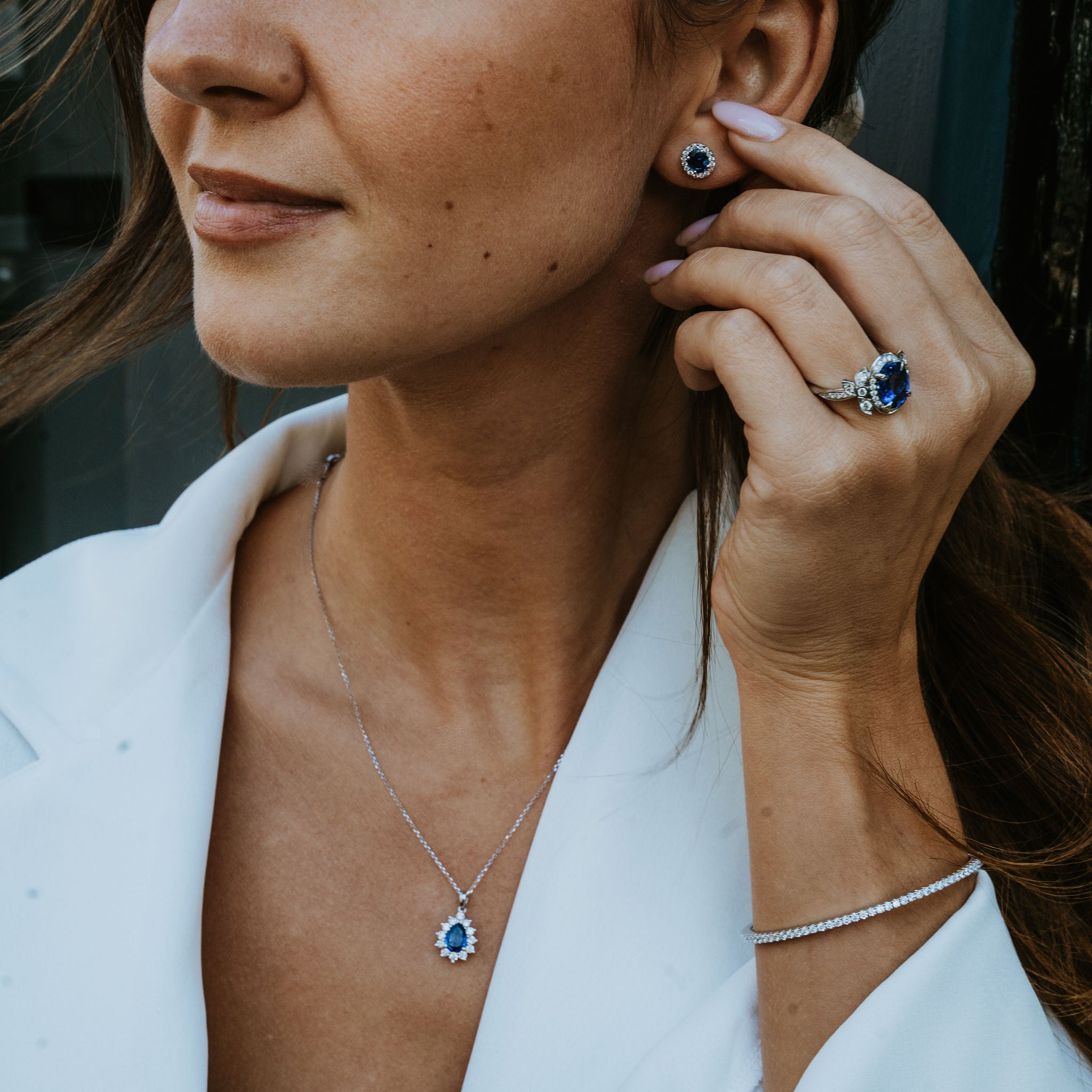 If you are getting engaged or married soon, choosing the ring can be one of the most exciting aspects of the whole process. After all, these are the rings that you will wear for life, symbols of the permanence of the love that brought you to this exciting point.
If you are getting engaged or married soon, choosing the ring can be one of the most exciting aspects of the whole process. After all, these are the rings that you will wear for life, symbols of the permanence of the love that brought you to this exciting point.
When you get such a ring on your finger, the symbolism won’t be the only thing that attracts attention. Everyone will want a look and may be wowed by what you are wearing.
The choices are never just about having one single diamond dominating the ring, of course. A solitaire is an option, but so are trilogy rings with three stones, while you don’t have to choose a diamond anyway. And even if there is a dominant diamond in the middle, you have the option of having it accompanied or even fully encircled by lots of smaller stones.
Even so, among these options is a fascinating choice of diamond cuts and there are some classic options. We have written before about some of these, like the Emerald, Asscher and Oval cuts. Another possibility is provided by the pear cut.
Where The Pear Cut Came From
Pear cut diamond rings have been around for centuries, with the International Gem Society tracing this cut back to the 15th century, when it first emerged in Flanders. Unlike some cuts, the origin of the pear cut can be stated with certainty.
The cut is not a standalone variety despite its fruity shape, but a combination of two other cuts, these being the round and the Marquise cuts. It was made possible by a new diamond cutting tool invented in 1475 by a cutter named Lodewyk van Bercken.
Van Bercken’s machine made more complex cuts possible than previously and this led to him merging two existing cuts to produce the first pear-shaped diamond.
Nowadays, the phrase ‘to go pear-shaped’ suggests something is going badly wrong, but this certainly wasn’t true in this case, for not only did it prove popular, but ever since then, cutters have been endeavouring to create the ideal cut by getting the right ratio of width to length to get the best light reflections and refractions.
This work means that this sparkle is one of the best attributes of a pear cut diamond. However, despite the experimentation with dimensions, the 58 facets used by van Bercken are still the default.
An obvious difference between the pear cut and other diamonds is the asymmetry, which means it is often used in jewellery other than rings, such as necklaces and earrings. What may be more notable, however, is the fact that it has always been a popular choice for a solitaire diamond ring, with both vintage and contemporary examples being commonplace.
Wear It Like Beckham
If you are seeking inspiration from any celebrities who are wearing pear cut diamond rings, you won’t have to look very far.
For example, there is Victoria Beckham, who has a pear cut solitaire diamond ring set in twisted white gold. Paris Hilton also had a spectacular 20-carat pear cut on her ring, while Cardi B went even larger with her big rock and rare carat gold ring with a Florentine finish.
By contrast, Sophie Turner went for a more minimalist look, while Katherine Heigl went for a pear cut diamond surrounded by a circle of smaller stones rather than a solitaire.
This array of different styles shows that there is certainly some variety to be enjoyed, be it the size of the stone, the metal in the ring, or whether it stands alone as a true solitaire or is combined with other stones. And in the latter case, that could be diamonds or other stones, such as rubies or sapphires. The only certainty will be the 58 facets.
Myriad Choices
You won’t find one single compelling reason to choose a pear cut over an Emerald, Asscher or Oval cut diamond. Each option has its own attractions and, ultimately, it is a matter of personal taste. If you want a bespoke ring, any cut of diamond can be varied in its size and presentation in numerous ways.
For those choosing a pear cut, it will be a matter of combining this uniquely asymmetric cut with a pattern that combines artistry and perhaps a bit of quirkiness, but still offers a myriad of possibilities.
Whether that was how Lodewyk van Bercken envisaged things back in 1475 when he set about demonstrating what his new cutting machine could do may only be guessed at. What we can be sure of is that a pear cut diamond will remain a popular option for many more centuries to come.





